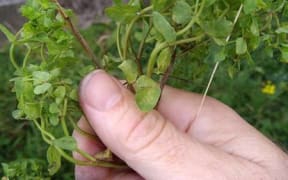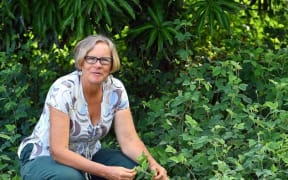Weeds are clearly flourishing in New Zealand gardens - judging by the interest on RNZ Nights – and now there’s a citizen science forum to join.
Colin Muerk from Manaaki Whenua / Landcare returned to to talk to Bryan Crump about more weeds that have been puzzling Nights listeners.
Among them is one he says is getting out of hand in urban areas.
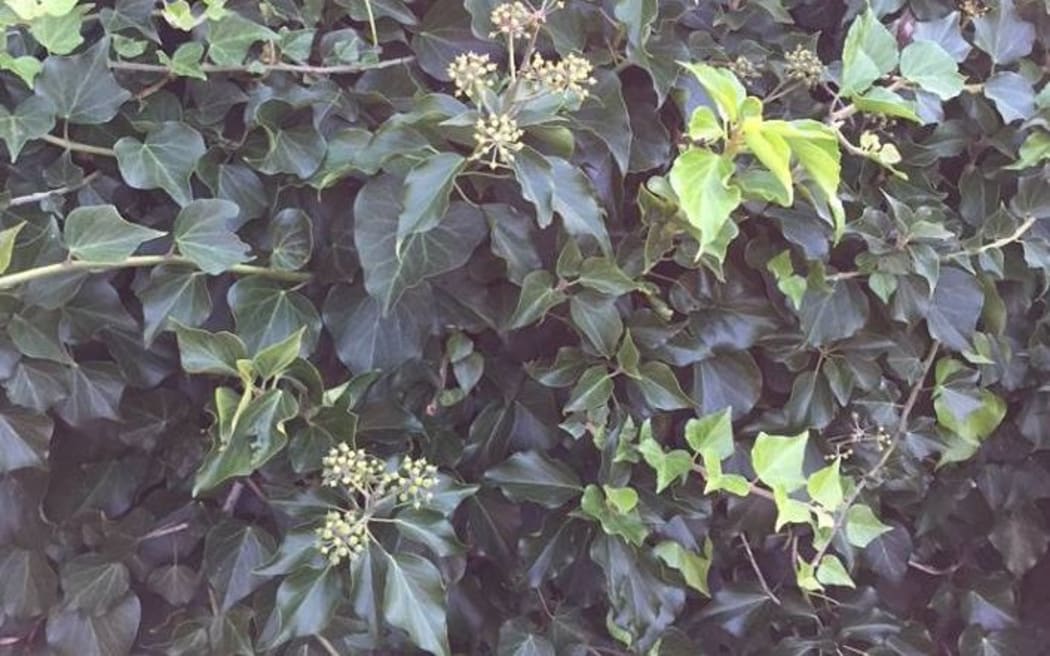
Ivy growing in a garden on Auckland's North Shore Photo: Supplied
Ivy is evergreen, shade tolerant and its seeds are attractive to birds, which spread them into our forests, Colin says.
“It’s something we should really be trying to eliminate from our urban environments because otherwise it’s going to spread through the whole landscape.”
Serious invasive plants are generally exotic species, but some native plants can be weedy as well.
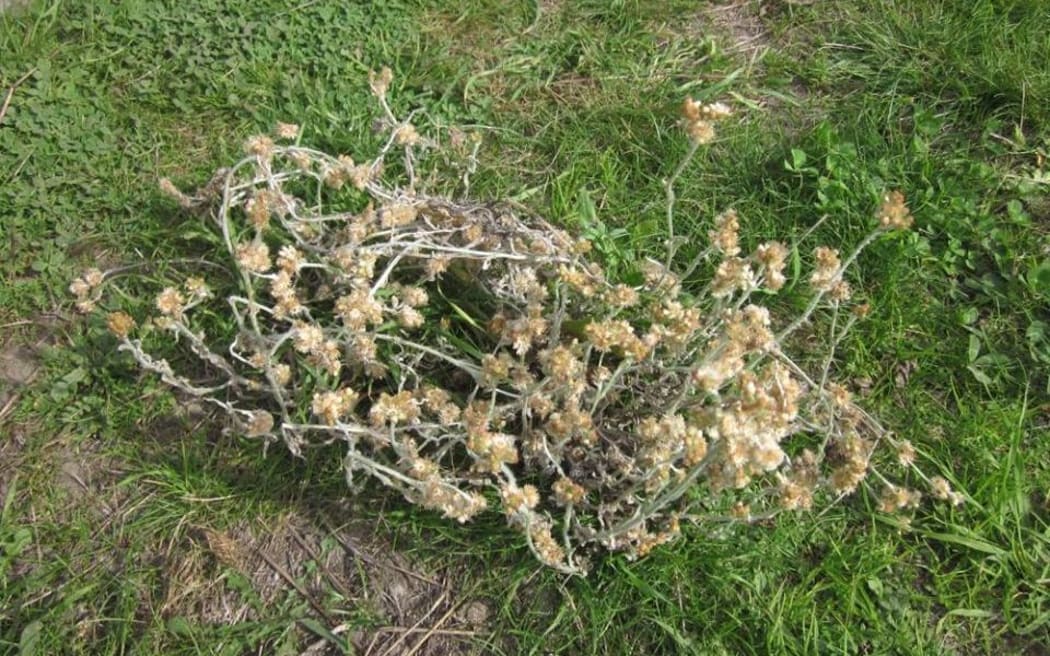
A native cudweed growing in West Melton, Canterbury Photo: Supplied
One native 'weed' has become abundant in Christchurch on rubble or ground disturbed or bare following the earthquakes.
The scruffy, daisy-like Pseudognaphalium luteoalbum is very common in waste places and urban environments, but Colin says it’s not a serious problem.
“There’s a lot to be said for being quite relaxed about allowing pretty, useful, interesting weeds as part of the diversity of the landscape as long as they don’t become serious invaders – which is usually the problem with a number of exotic species.”
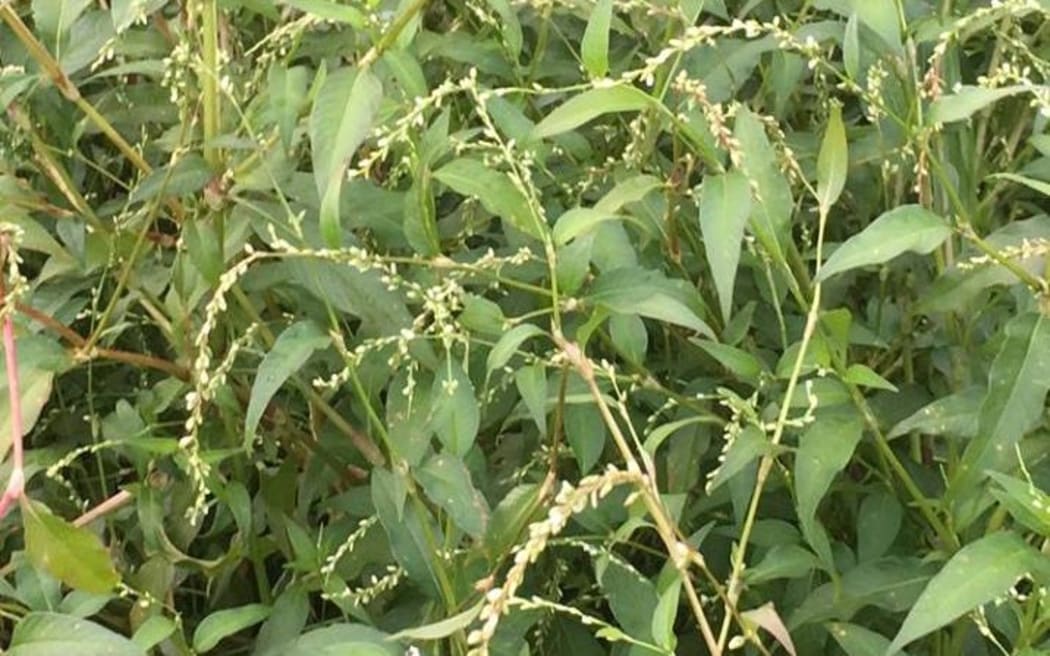
Polygonum salicifolia growing in Northland Photo: Supplied
Polygonum salicifolia, a swamp willow weed, is another native and is one of the dock family. “It might be spreading a bit in damp or wet places but it’s not going to take over the farm.”
Colin is also a trustee of NatureWatchNZ – an online citizen science forum for observation of “everything from the oceans to the tops of the mountains”.
About 2500 people are involved in identifying the items people share. The site has close to half a million recorded observations and is always always interested in getting more, Colin says, be it garden plants, weeds, pests, native plants, animals or fungi.
“The important thing about citizen science is it’s a partnership between citizens and scientists and they both get something out of it,” he says.
“People who are still learning about these things can put observations up on the site and they’ll get some comments or identifications from the crowd of experts.”
In return, the scientists get valuable data – archived record that can contribute knowledge about the biology of species, the effect of climate change or the spread of pests.
An RNZ Nights for Nature page has now been added to its site for listeners to share and discuss their observations.
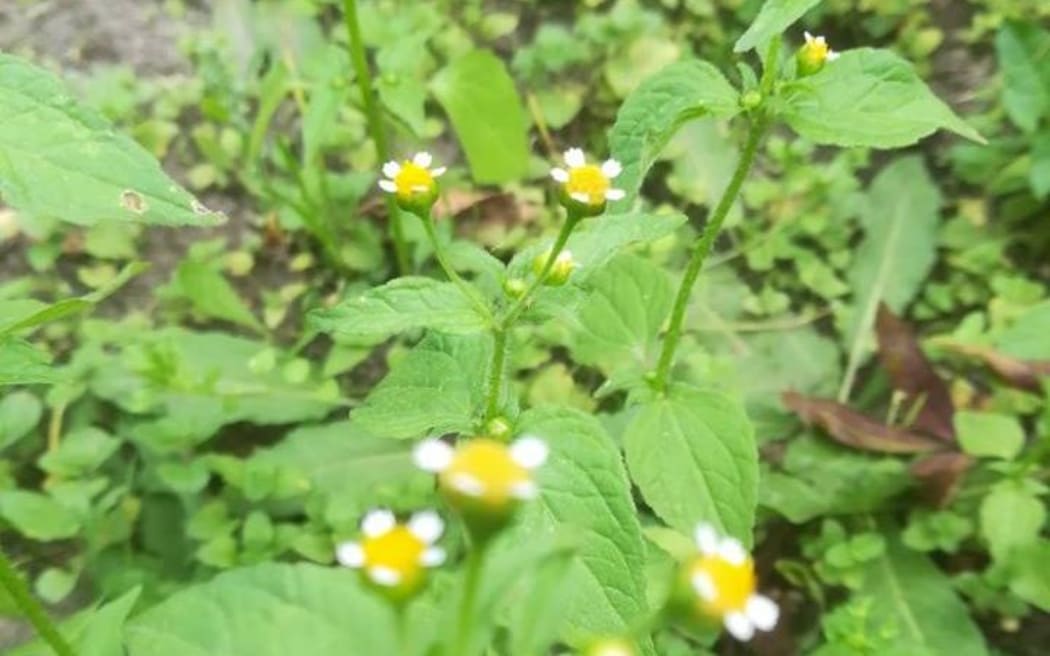
Galinsoga parviflora (gallant soldier) – a soft herbaceous plant that that will always pop up on bare ground. Photo: Supplied
A few weeks ago, Queensland ecologist Wendy Seabrook pointed out on Nights the value of any vegetable matter as a mulch.
Colin says dead plant matter can be useful to lay on the soil to conserve moisture and suppress other weeds - but says it should be from non-invasive plants, and ones that you’ve pulled out before they’ve got seed heads.
“You wouldn’t want to let serious invasive species get away and multiply”, he says.
A classic case is twitch, or couch grass, which has extensive underground rhizomes that build up in the soil and eventually take all the nutrients and moisture away from the plants you want.
See more of the weeds Colin talked about here
Check out RNZ Nights for Nature here
Getting on top of your weeds
Queensland ecologist Wendy Seabrook talked about how to get weeds to work for you in the garden a few weeks ago, but what about the weeds we have in NZ? Ecological scientist Colin Meurk comes to the… Audio, Gallery
Why your garden needs weeds
The scruffy weed-filled corner of your yard could be the key to making a thriving garden. Eecologist Wendy Seabrook makes the case for weeds. Video, Audio
